Free Download Stations Map 📍
A map that helps bridging product value.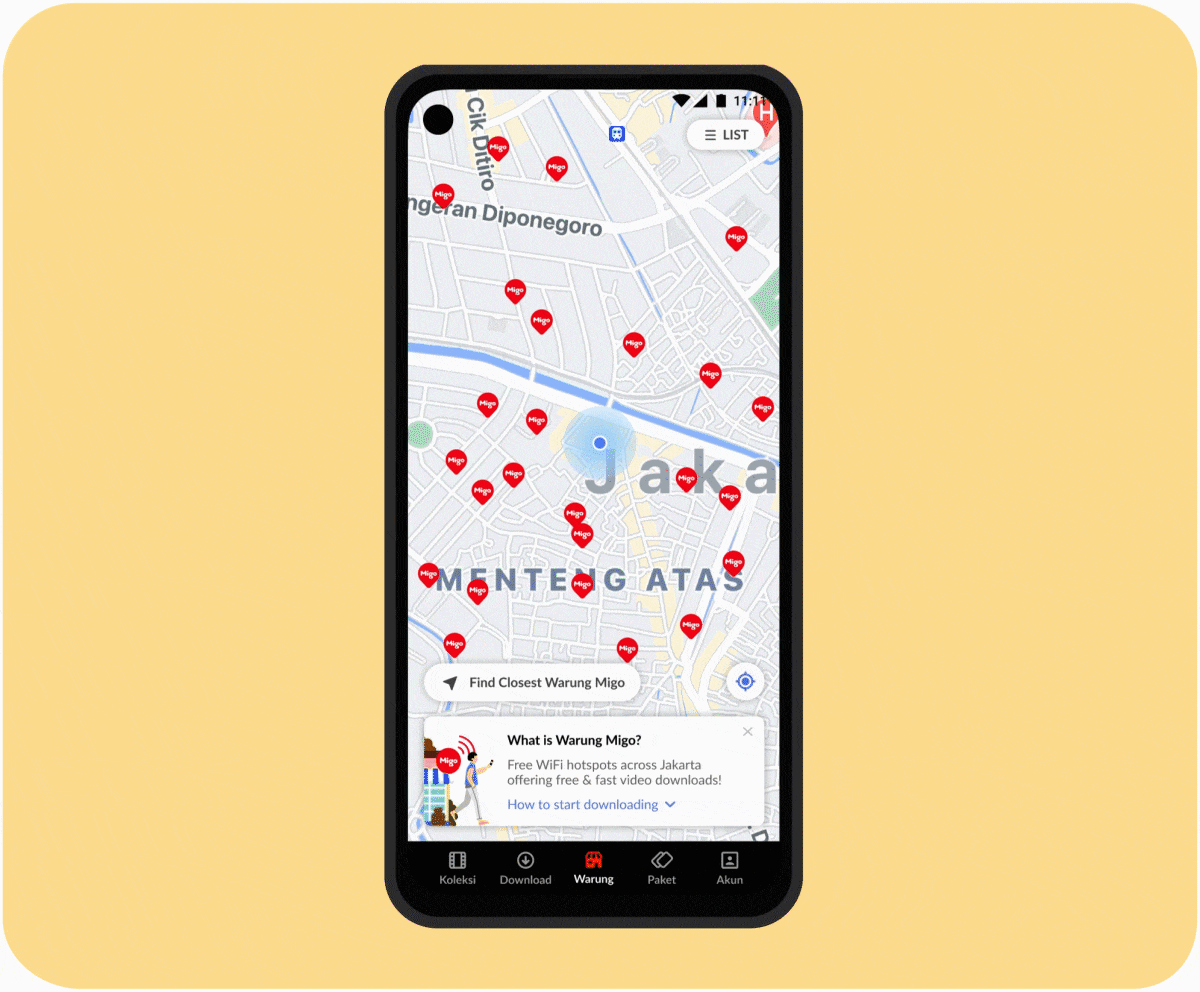
Summary
As a video watching service that only allows downloads, we face a challenge in communicating to users that they must go to a download station instead of using data roaming. Our user journey is longer and more complex compared to other major streaming platforms because users must physically go to a specific location to download video files before watching.
I was appointed as lead designer to improve this experience and worked closely with the data and research teams. The resulting design successfully raised user awareness.
Results
- The new location map has increased page visits by 84% compared to the previous Account/Locator.
- The store location detail page has seen a 55% increase in page visits.
Timeline: 5 Weeks (Mar - May 2021)
Team: UX researcher, PM, Data scientist, Developers
Role: UIUX design, Ideation, User Testing, Prototyping
Identified Problems and Opportunities (Based on Market Research)
- Many users believe that our app is a streaming service.
- Many users are unaware of how to download videos or where to find the nearest download station.
- The company is constantly adding new station locations, which can be overwhelming for users to navigate in a list view.
- It is also difficult for the marketing team to display promotional information for each store on the location list view."
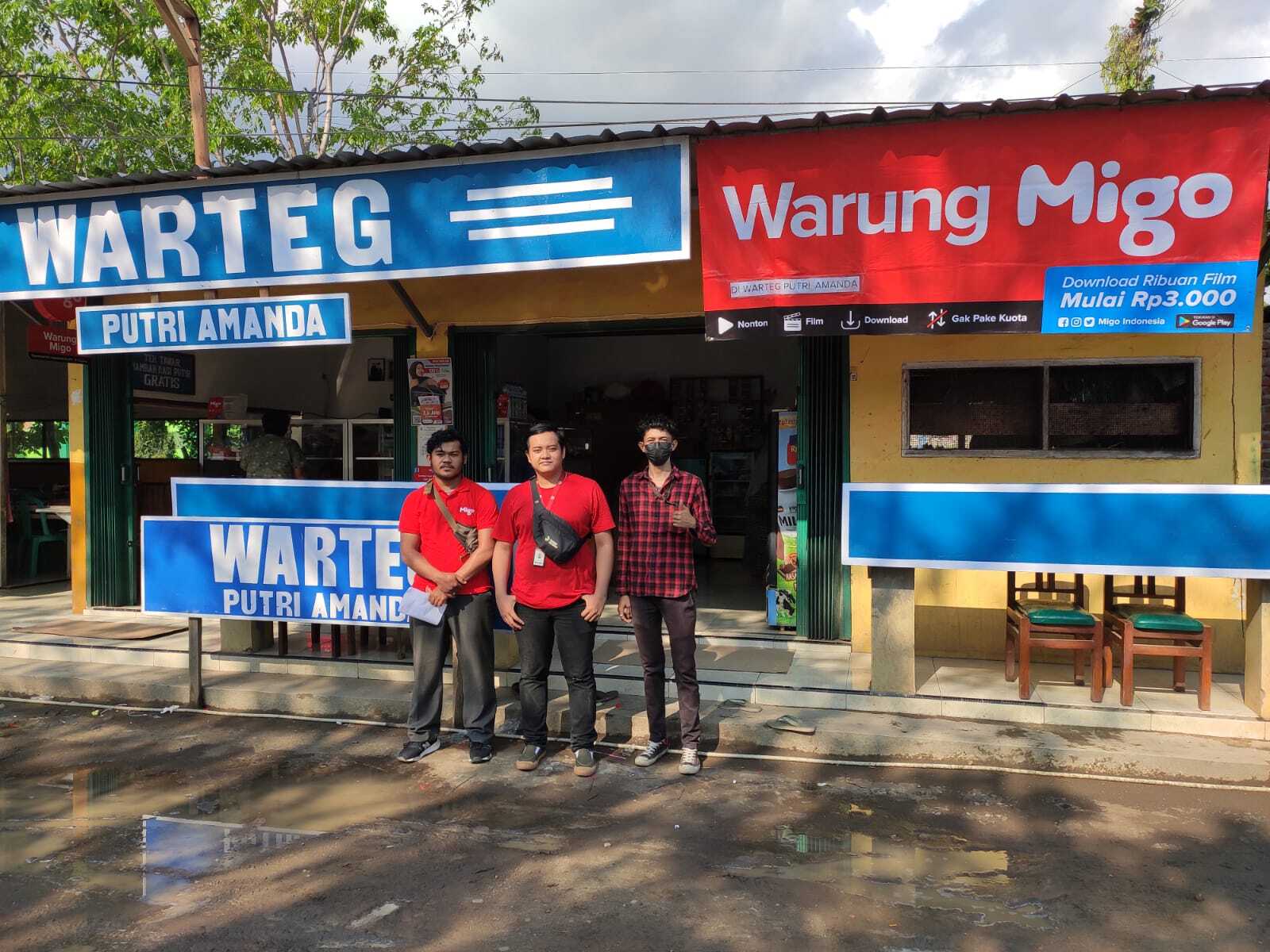
User Journey Mapping
We have developed and installed WiFi machines in our stores, known as Warung Migo, as a one-of-a-kind offline distribution platform. To download selected titles, users must visit a Migo store and connect to our free WiFi at the download station.
There are five critical experiences in the app;
1. Content discover
2. Download (which requires users to physically go to a download station) ⚠️
3. Payment
4. Watching
5. Repeat usage

Our data shows that the "content download experience" has a significant drop-off (~50%) in the user journey. As a result, our design goal is to improve and enhance the download experience.
Business Operation Request

There is also a business case for this feature. The company has experienced rapid growth in the past six months, expanding its network from 100 locations in May 2021 to 500 sites, with a goal of reaching 1000 by the end of the year. By using map features, we can collect and analyze data on a large scale to inform our operational strategy. It is important to inform organic install users that our service area is expanding and that they can always find a new download station nearby.
*As of January 15, 2022, there are 1000 stores across Indonesia..
Conduct user interviews to validate assumptions
Our target audience tends to have low tech profiles in the emerging market, so we always ensure that the design process considers local context and includes usability testing with actual users. I used the live version of the app to conduct interviews in Taipei in order to identify issues and use them as benchmarks.
Interview objective:
Identify and understand the current challenges in the service and app onboarding process.
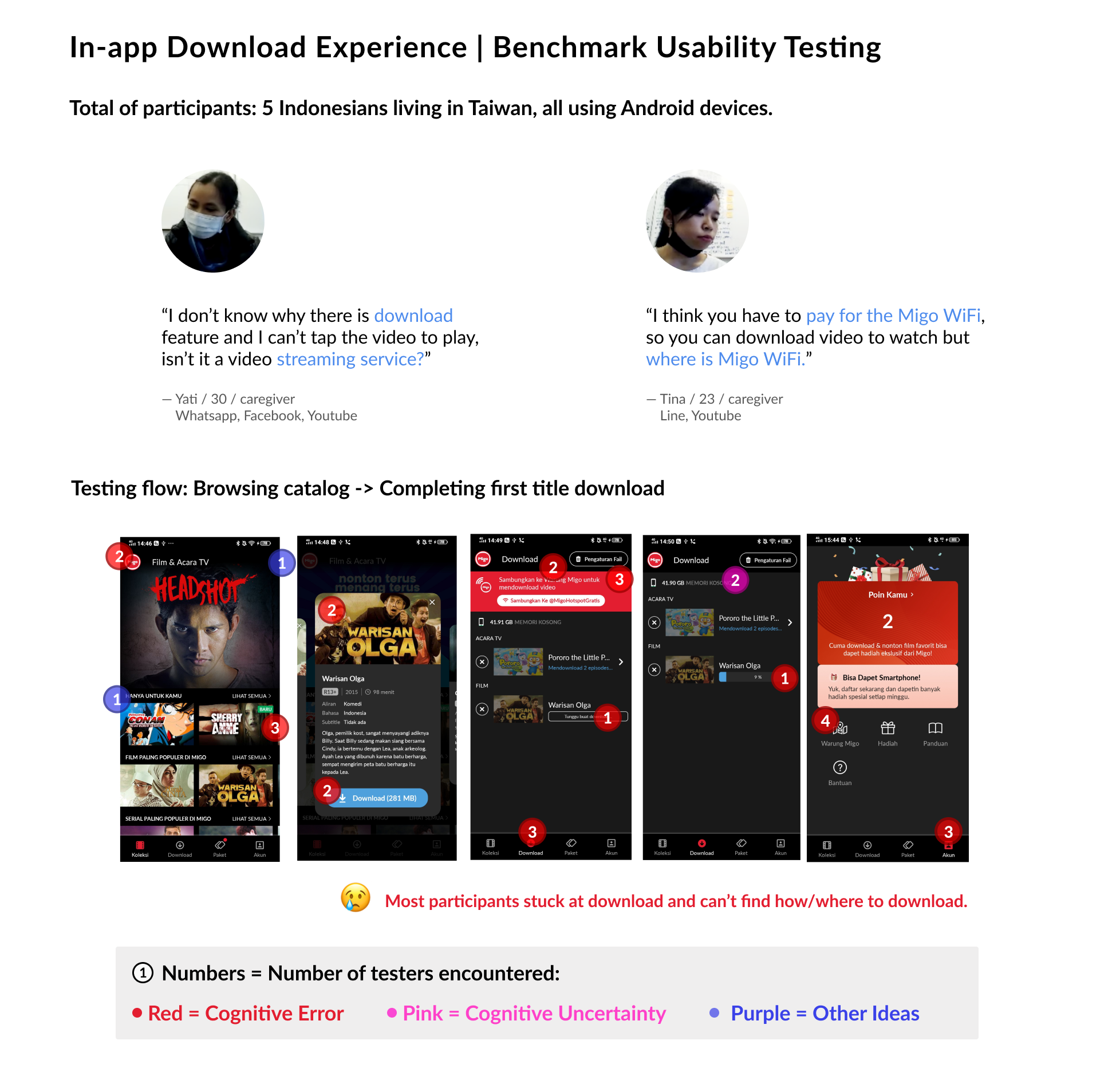
Key findings:
- Users have difficulty distinguishing our service from a streaming service.
- Users are unsure of how to download and where to find download stations.
- After being shown the list of download stations, users do not think it should be located in the Account tab.
Design Process

Design Rational
To make it more clear to users where they can find download stations, which is a necessary part of the user experience, we made it a high priority to display all of the download station locations prominently in the app. Since users must visit a download station to use the service, we determined that the map showing all of the stations should be given a prominent position in the information hierarchy. As a result, we decided to make it one of the primary tabs: Location.
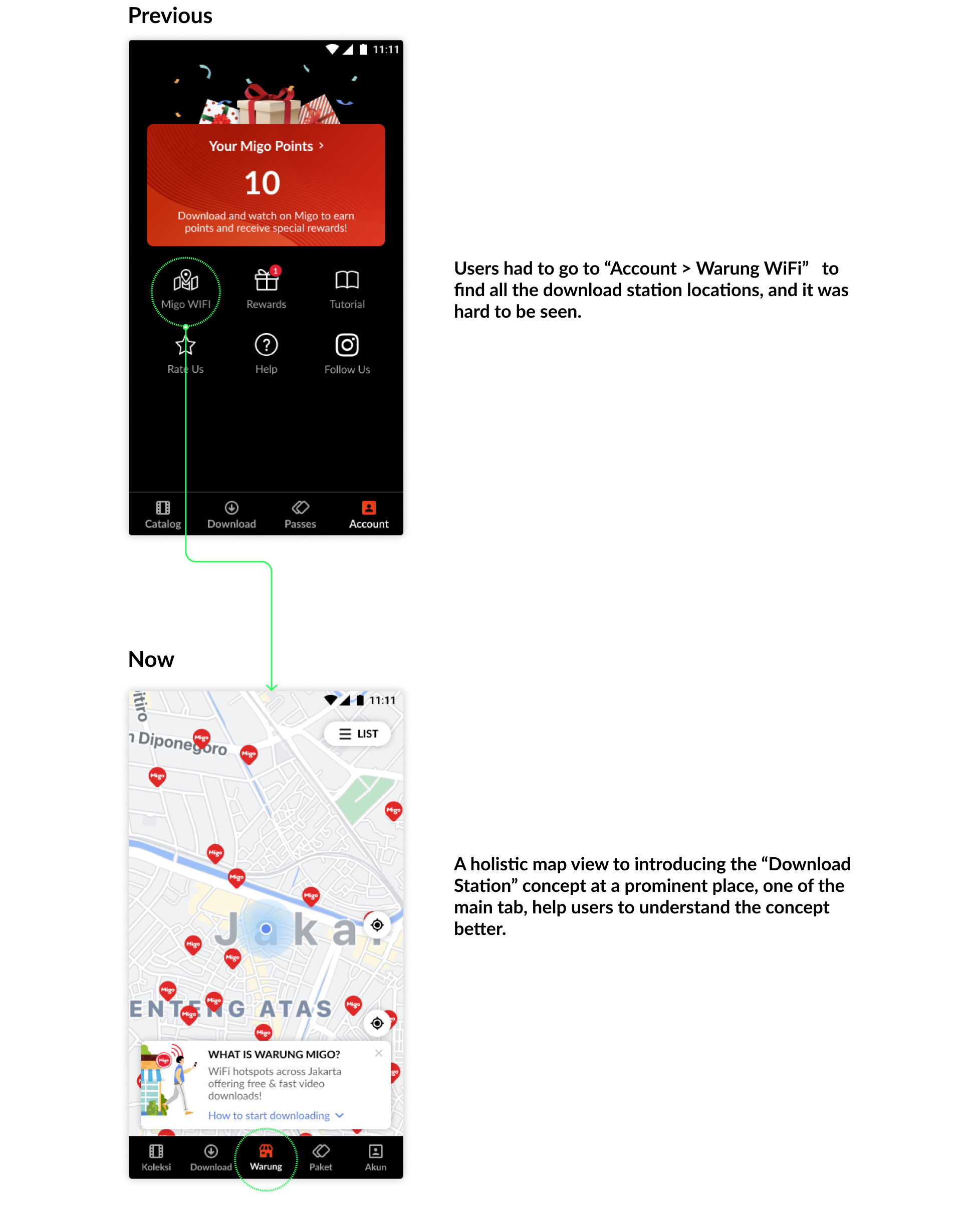
Location Tab Design: Map View vs List View
When we launched the Location feature in the Philippines, we chose to use the list view to display all of the download stations due to the widespread poor internet accessibility among our users there. However, after collecting data on our users in Jakarta and analyzing their device specifications, we found that the environment was different in this location. People in Jakarta are accustomed to using services like Grab and internet penetration is above 65%. As a result, we decided to use the map view as the default download station view in Jakarta.
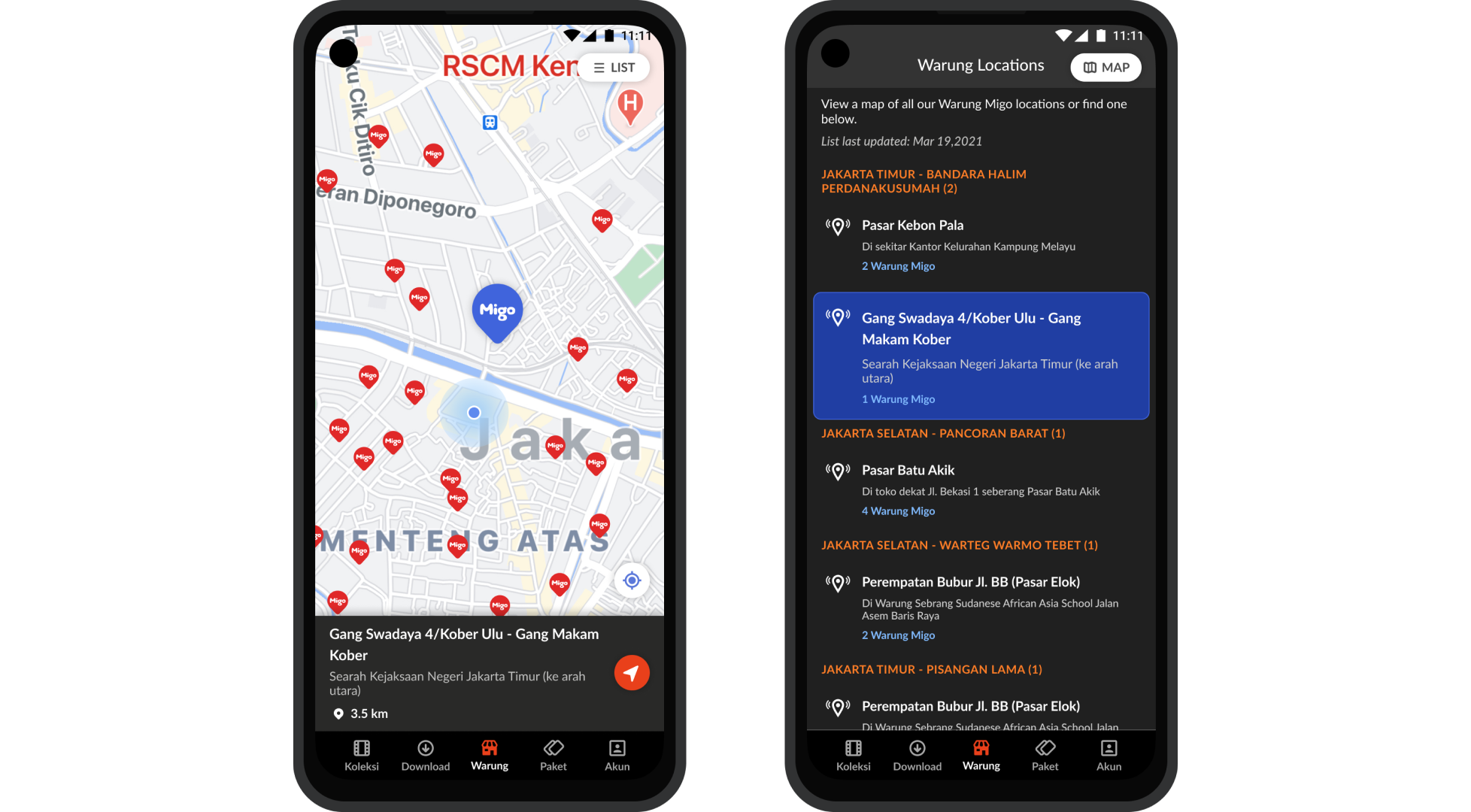
Design Constraints in Emerging Markets
Designing features for emerging markets presents unique challenges, as a wider range of edge-case scenarios must be taken into consideration.

- Slow internet speed or lack of internet: to address this issue, we provide an alert suggesting users to use the list view when browsing the map.
- Users might not grant location permission: we created a dialog box that explains the benefits of enabling this permission.
- Users who are not in the service area: we added a dialog box that informs them they cannot proceed with the feature.
Design in Details
To ensure a positive user experience, we included onboarding tutorials for first-time users of the map feature.

To enhance the effectiveness of our marketing campaigns, the map feature has been designed to not interfere with users' content browsing experience.

We optimized the layout of the list view to make it concise for quick loading speed.

Iterations
Dark Mode Map —
A significant number of our users have low-end phones, thus using dark mode decreases the exposure to light. This improves user interaction with the map UI and reduces strain on reading.
Digital Store Coupon —
To incentivize new users to visit stores and increase general traffic for existing users, we implemented a digital store coupon feature. This will encourage users to visit download stations more frequently.
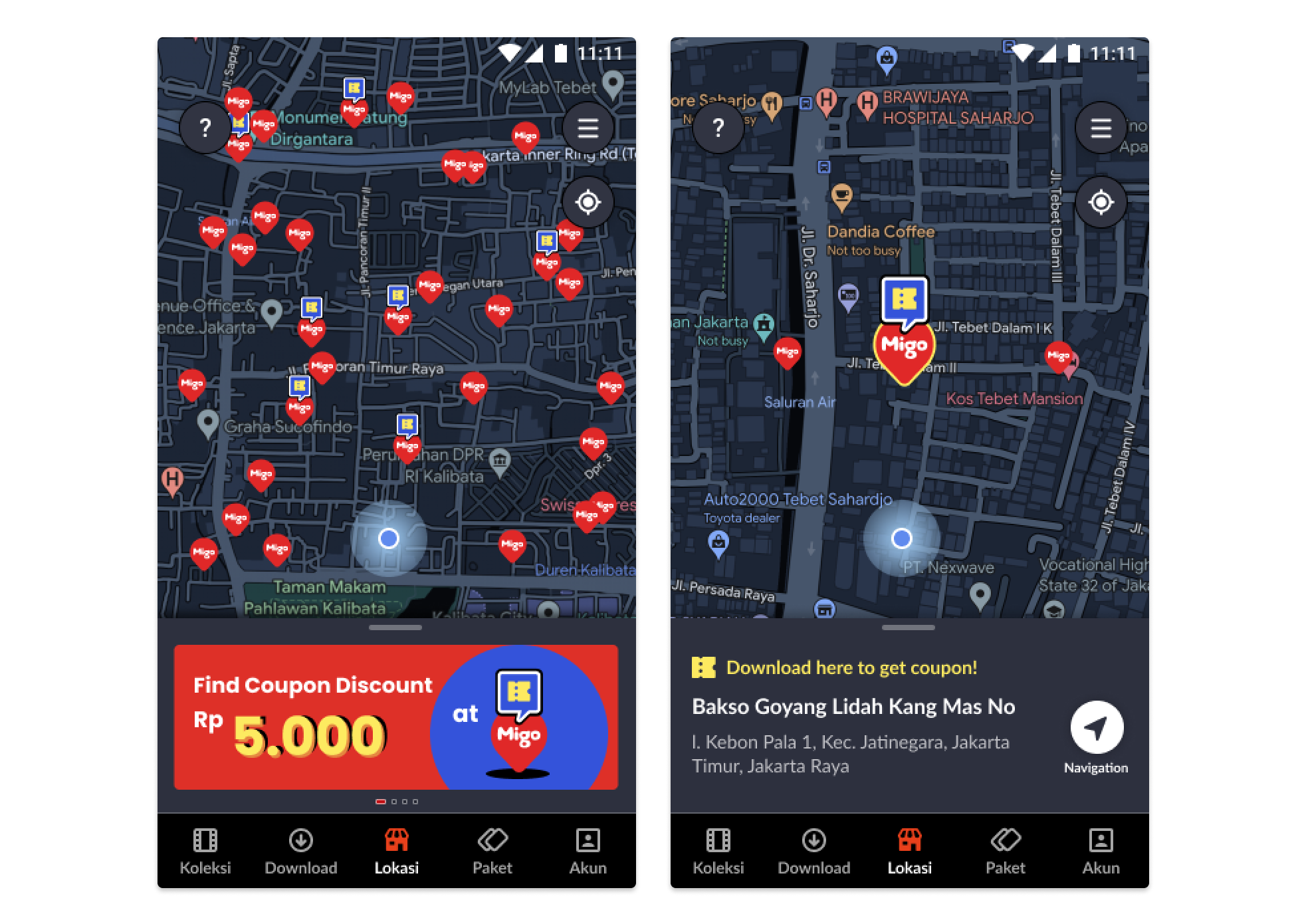
Thank you for taking the time to read this project. 🙏
Design and coded at Taipei, Taiwan
© 2022
